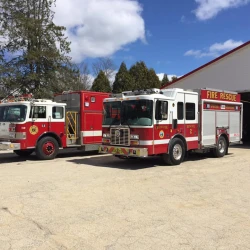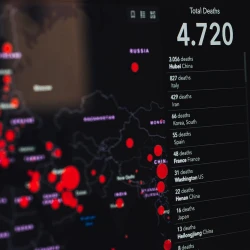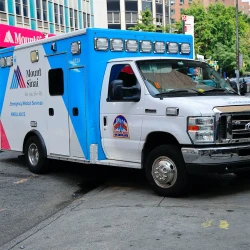Introduction
Life Safety Institute, a respected educational institution located in New Hampshire, has created a revolutionary pathway for existing medical professionals. This bridge program allows licensed Medical Doctors (MD), Doctors of Osteopathic Medicine (DO), Physician Assistants (PA), and Registered Nurses (RN) to become Emergency Medical Technicians (EMTs) with limited effort. This initiative provides an opportunity to broaden career horizons and strengthen emergency medical services within the State.
Section I: The Need for the Program
1. Shortage of EMTs in New Hampshire
New Hampshire faces a challenge in filling EMT positions. An aging population, increasing medical emergencies, and rural areas requiring service have led to a demand for qualified professionals.
2. Utilizing Existing Medical Skills
The program harnesses the existing skills of medical professionals, allowing them to apply their expertise to pre-hospital care. This initiative recognizes their abilities and provides an accelerated pathway to becoming an EMT.
3. Promoting Interprofessional Collaboration
Enhancing collaboration between different healthcare professionals fosters a more robust medical system. This program fosters integration between various medical fields, encouraging shared learning and professional growth.
Section II: Eligibility and Admission Process
1. Who Can Apply?
The program is open to licensed MD, DO, PA, and RN professionals who have active licenses in the State of New Hampshire.
2. Application Procedure
Prospective students must contact Life Safety Institute and submit proof of existing licenses and request entry into the bridge program.
Section III: Curriculum and Training
1. Customized Training Module
The program offers a shortened duration compared to traditional EMT training. This is possible due to recognition of existing skills and knowledge, with curriculum tailored to build upon these competencies.
2. Practical Training
Real-world experience is essential. Participants engage in hands-on training supervised by experienced EMTs and healthcare educators, including simulation scenarios that mimic real emergencies.
3. Examinations and Assessments
Assessments are tailored to acknowledge the prior training and expertise of participants. Graduates must pass a final exam that meets the State of New Hampshire's standards for EMT certification.
Section IV: Collaboration with Medical Community
1. Support from Hospitals and Ambulance Services
Life Safety Institute collaborates with local hospitals and ambulance services, ensuring that students have access to the best resources and experts in the field.
2. Community Engagement
Community engagement and partnerships with local healthcare providers are vital. These connections allow for continuous dialogue and collaboration that benefits all parties involved.
Section V: Outcomes and Benefits
1. Enhanced Workforce
This program addresses the critical EMT shortage in New Hampshire, providing a qualified and experienced workforce ready to respond to emergencies.
2. Strengthened Emergency Response
Having experienced medical professionals join the ranks of EMTs enhances the quality and speed of emergency responses, saving more lives.
3. Professional Growth
The bridge program opens new career pathways, providing medical professionals with opportunities to expand their roles and contribute to community wellbeing.
Conclusion
Life Safety Institute's bridge program in New Hampshire is more than just an educational opportunity; it's a vision for a healthier and more resilient community. By transforming the career pathways for MDs, DOs, PAs, and RNs, the program strengthens the fabric of emergency medical services, forging a future where collaboration and innovation lead the way.
By bridging the gap between different medical professions, the Life Safety Institute is not only addressing an immediate need but also setting a precedent for other states to follow. The blend of practical experience, theoretical knowledge, and community engagement makes this program a beacon of innovation and a step towards a better healthcare system in New Hampshire.




